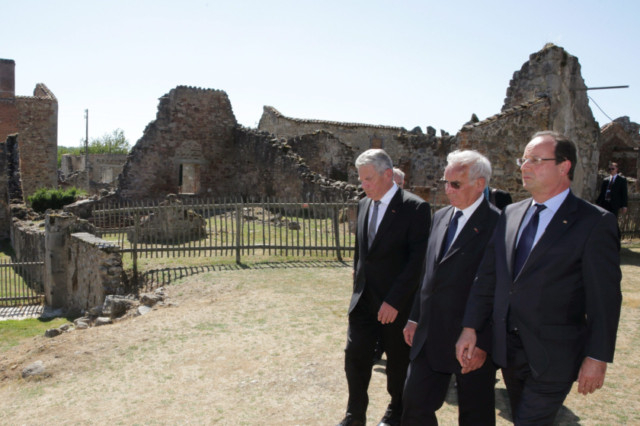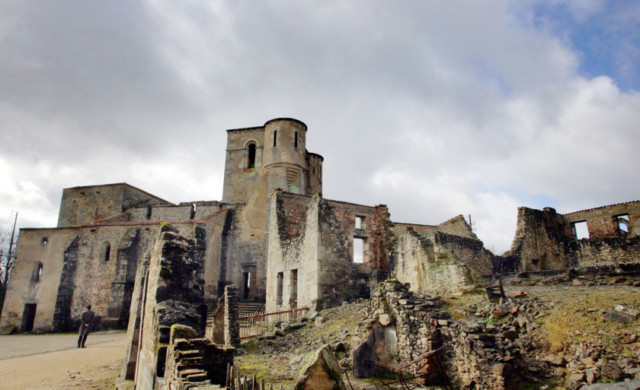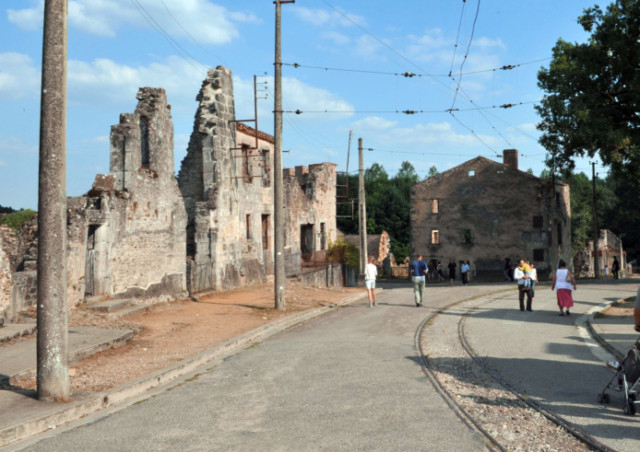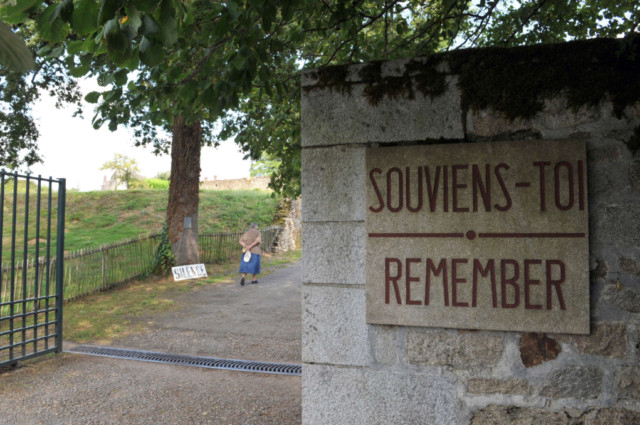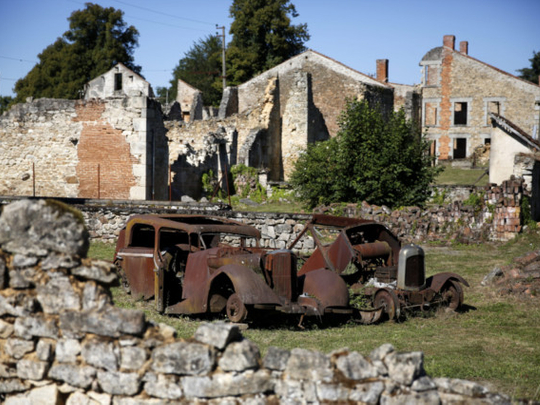
Oradour-Sur-Glane, France: The presidents of Germany and France on Wednesday joined hands with a survivor of the Nazis’ worst atrocity on French soil in a historic moment of reconciliation.
On a day laden with symbolism, President Joachim Gauck became the first German leader to visit Oradour-sur-Glane, a village in west-central France where SS troops massacred 642 people on June 10, 1944.
The village has been a ghost town ever since, deliberately preserved in that state as a memorial to those who died on one of the darkest days of the Second World War.
The most poignant stage of Wednesday’s visit came after Gauck, French President Francois Hollande and 88-year-old Robert Hebras entered the church in which the women and children of the village were killed with toxic gas before the church was set on fire and their bodies burned.
Hebras, whose mother and sisters perished that day, was briefly overcome with emotion as he explained what had taken place.
Hollande stepped forward to take his hand, Gauck placed a comforting arm around his shoulders and the three men then stood, hand-in-hand, in silence for several moments.
The apparently spontaneous gesture of the three men reflected what Gauck had said he hoped his visit would achieve.
“I want to reach out to the victims and tell them: I am at your side,” he said.
“I am 73 years old, I was born during the war, I was steeped in the discussion of our guilt... I will tell the victims and their families: We know what was done.”
Some 205 children were among victims of the atrocity, which left deep scars in France.
After the war, General Charles de Gaulle, who later became president, decided that the village should not be rebuilt but remain a memorial to the barbarity of Nazi occupation. A new village was built nearby.


